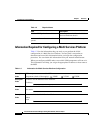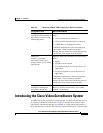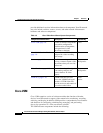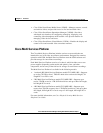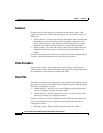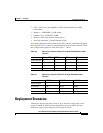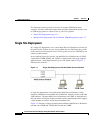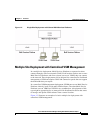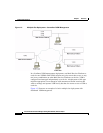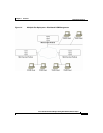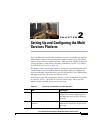
Chapter 1 Overview
Introducing the Cisco Video Surveillance System
1-10
Cisco Video Surveillance Manager Getting Started Guide, Release 4.2/6.2
OL-19733-01
Cameras
Cameras provide video images and, depending on the camera, audio. VSM
supports a wide variety of fixed and movable pan, tilt, zoom (PTZ) cameras of
these types:
• Analog cameras—Capture video and (on some models) audio and output this
information in one or two analog streams (depending on the model). An
analog camera requires a video encoder to convert this stream to a digital
stream that can be processed by the IP network and VSM components.
• Digital cameras—Also called IP cameras, these devices capture video and
output this information in one or two digital streams (depending on the
model).
For details about the features, functions, placement, installation, and operation, of
a camera, see the documentation that is provided for the camera.
Video Encoders
Video encoders convert video streams from analog cameras into IP packets,
compress these packets, and forward them to the network. An analog camera must
be connected to a video encoder to operate with VSM.
Client PCs
Client PCs are computers that can connect to the network on which VSM runs and
that you use to access various VSM features and perform various VSM operations.
These PCs are identified as follows:
• VSOM client PCs—Provide access to the VSOM web-based interface that
you use to configure, manage, and operate VSM.
• VSVM client PCs—Provides interactive access to live and recorded video,
which you can display on configured monitors.
One PC can function as both a VSOM client and VSVM client simultaneously.
Cisco has verified the successful operation of dedicated client PCs that are
configured as follows:
• Operating system—Windows XP Professional with Service Pack 2





